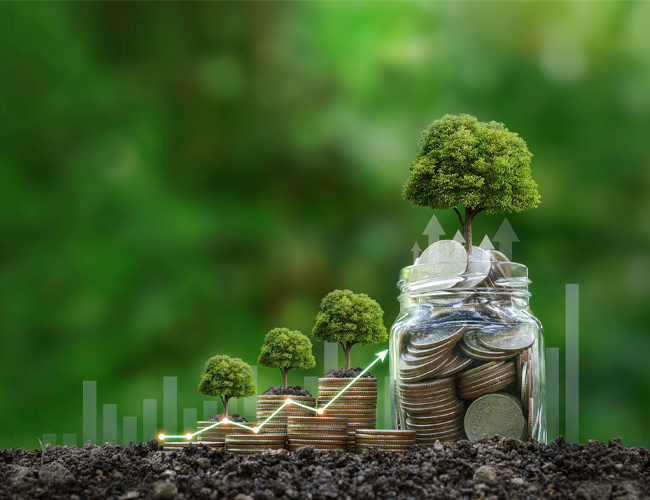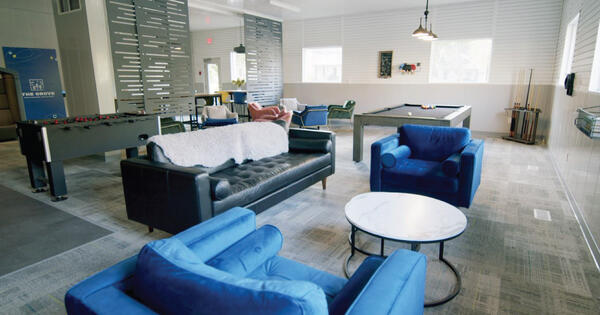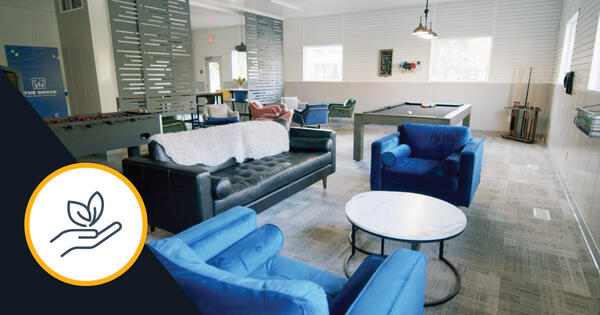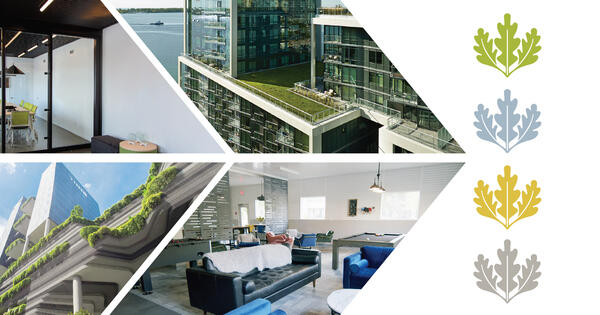In the ever-evolving world of architecture, sustainability isn't just a buzzword; it's a driving force shaping the future.
As we enter 2024, the demand for eco-friendly construction materials continues to rise. Let's explore seven sustainable building materials that are redefining modern construction.
Key Benefits of Sustainable Building Materials
Embracing sustainable building materials goes beyond a green gesture — it's a game-changer. From reducing environmental impact to boosting economic efficiency and enhancing social well-being, the advantages are compelling. Let's break it down:

Environmental Benefits
Reduced Carbon Footprint. Sustainable materials often have lower carbon footprints due to local sourcing, energy-efficient production, and recyclability.
Resource Conservation. Sustainable materials contribute to the preservation of natural resources, reducing environmental impact.
Greenhouse Gas Emission Reduction. Choosing sustainable materials helps mitigate climate change by lowering overall greenhouse gas emissions.

Economical Benefits
Cost Savings. Sustainable materials offer economic benefits through increased energy efficiency and reduced maintenance costs over the life cycle of a building.
Job Creation. The demand for sustainable construction practices stimulates job creation, contributing to economic growth.
Market Value Enhancement. Buildings constructed with sustainable materials often have higher market values, attracting environmentally conscious buyers and investors.

Social Benefits
Improved Indoor Air Quality. Sustainable materials contribute to healthier indoor environments by minimizing the release of harmful pollutants — enhancing the well-being of occupants.
Community Well-being. Supporting local industries using sustainable materials fosters community resilience while preserving natural habitats contributes to the overall well-being of communities.
Climate Resilience. Sustainable building practices help communities better withstand the impacts of climate change, ensuring a more sustainable future.
7 Eco-Friendly Building Materials to Use in 2024

Bamboo
Bamboo, a giant grass with an incredible growth rate, is the unsung hero of sustainable building and has transformed from garden privacy screens to a cornerstone of eco-conscious construction.
Bamboo is considered sustainable primarily due to its rapid growth, allowing frequent harvesting without depleting the resource. But its sustainable nature goes beyond speed, with several factors contributing to its eco-friendly status:
- Bamboo doesn't require pesticides or fertilizers to help it grow.
- Bamboo has a negative carbon footprint – it absorbs up to four times more CO2 than other tree species.
- When harvested, the bamboo plant isn’t killed – part of the stalk is left behind, which can stimulate the root system and allow the plant to regrow.
- Bamboo has a tensile strength of 28,000 pounds per square inch (PSI), making it stronger than steel (23,000 PSI), concrete, brick, and hardwoods like oak.
From flooring to furniture, bamboo is a versatile material that extends to diverse applications, making it a top choice for eco-conscious builders.

Mycelium Brick
Mycelium, the root-like structure of mushrooms, has become a game-changer in sustainable construction. Mycelium bricks are crafted by growing mycelium on agricultural waste, where the mycelium network binds together the agricultural waste, creating a durable and lightweight material suitable for various applications.
This has a two-fold environmental benefit:
- Mycelium is an adept decomposer, transforming agricultural waste into a valuable construction material.
- Mycelium growth requires minimal energy input, contributing to a lower carbon footprint compared to traditional brick production. As mycelium is biodegradable, the end-of-life disposal poses minimal environmental impact.
While mycelium bricks aren’t as strong as traditional bricks, they are 60 times lighter and excel in non-load-bearing structures, insulation, artistic designs, and temporary constructions.

Precast Concrete
While concrete is a cornerstone of construction, precast concrete takes sustainability to new heights. The precast manufacturing process contributes to its eco-friendly profile in several ways:
- Precast factories operate under controlled conditions, reducing the environmental impact of construction sites by minimizing waste and recycling excess materials.
- Portland cement, a key component, often incorporates recycled materials like old concrete and glass, minimizing the demand for raw materials.
- Precast cement has a lower water-cement ratio, which enhances the cement’s durability and allows for water recycling during production.
- The thermal mass properties of precast concrete also contribute to energy efficiency for buildings, as it absorbs and releases heat slowly.
Precast concrete is popular for applications like warehouses, manufacturing plants, schools, and retail stores, but it can be used in any application that calls for strength, durability, sustainability, and fast-track construction.

Mass Timber
Mass timber refers to engineered wood products like cross-laminated timber (CLT), glue-laminated beams, and laminated veneer lumber. Mass timber involves turning these engineered wood products into large, solid panels, columns, and beams for load-bearing purposes. It derives its eco-friendly status from a few facets of its production and performance:
- Mass timber is prefabricated, which minimizes on-site construction waste and disruption.
- Mass timber has a lighter carbon footprint when compared to traditional construction materials. Its use in Canada could annually cut out 600,000 tonnes of CO2 per year by 2030, which is equal to removing 125,000 cars from the road.
- Large slabs of mass timber (up to 18 feet long, 98 feet wide, and 1 foot thick) match or exceed the strength-to-weight performance of concrete and steel.
- When designed with the local climate in mind, mass timber buildings can last for centuries, while preservative treatments enhance a structure’s durability.
Mass timber, specifically CLT, can be used to make floors, walls, ceilings — entire buildings — and can contribute positively to carbon neutrality and overall environmental health.

Wool Insulation
Wool insulation stands out as a natural, sustainable alternative to traditional insulation materials like fiberglass. The sustainability of wool insulation is rooted in its production process and inherent properties: Wool is sheared from sheep, a renewable resource that requires no harm to the animal.
- The insulation manufacturing process is energy-efficient because natural fibers are easily transformed into insulating materials.
- Wool's unique structure allows it to absorb, retain, and release moisture without compromising its thermal properties, which contributes to improved energy efficiency by maintaining optimal indoor humidity levels.
- In addition to absorbing moisture, wool also pulls harmful chemicals such as formaldehyde, nitrogen oxide, and sulfur dioxide out of the air to improve indoor air quality.
- Wool rolls and batts have a 10% greater insulating factor than fiberglass insulation.
- Wool insulation is naturally flame-resistant, eliminating the need for chemical flame retardants that can be harmful to indoor air quality.
- Effective in controlling noise, wool adds a layer of acoustic comfort to any space.
And at the end of its useful life, wool insulation is compostable, completing the sustainable life cycle loop.

Structural Insulated Panels (SIPs)
Structural Insulated Panels (SIPs) consist of an insulating foam core sandwiched between two structural facings, typically oriented strand board (OSB). The primary sustainability aspects of SIPs stem from their resource efficiency and airtight construction:
- The materials used in SIPs (foam and OSB) are often sourced responsibly and require less energy and raw materials to produce than other building materials.
- SIPs install with a tight seal that results in excellent thermal performance, reducing the need for excessive heating and cooling energy. In fact, SIPs are about 50% more energy-efficient than traditional timber framing.
- SIPs minimize or eliminate incoming unfiltered air from outdoors, which allows for better control over indoor air quality.
- SIPs have lower embodied energy than traditional construction materials like steel, concrete, and masonry.
- SIPs come as a complete wall unit, so there’s no time spent on framing or insulating the rooms in a home. With SIPs, a complete house envelope can be built in a matter of days instead of weeks.
SIPs are ideal for residential and light commercial construction.

PVC Panels
Polyvinyl chloride (PVC) wall and ceiling panels, exemplified by products like Trusscore Wall&CeilingBoard, have evolved into a sustainable alternative to drywall in residential, commercial, and agricultural construction.
The sustainability of PVC panels is driven by their durability, recyclability, and minimal environmental impact. Here’s how:
- During manufacturing, Trusscore minimizes the raw material used to manufacture wall and ceiling panels by operating a zero-waste facility, using recycled materials wherever possible, and regrinding excess material created during production.
- Trusscore Wall&CeilingBoard panels are available in 8’, 10’, 12’, 14’, 16’, and 20’ lengths, and are also available in custom sizes to reduce material waste.
- The abrasion resistance of PVC also means that the panels are impact-resistant and can stand up to contact without showing dents, cracks, or damage. Unlike drywall, Trusscore products have a service life of up to 100 years.
- Trusscore wall and ceiling panels are 100% water resistant and will remain that way throughout the life of the product. The presence of PVC means the panels shed water and won’t absorb airborne moisture. They won’t degrade or deteriorate in wet or damp environments.
- Trusscore Wall&CeilingBoard is low volatile organic compound (VOC) compliant and meets California’s standards for low-emitting materials.
- Trusscore panels have a light reflectivity rating of 90%, meaning they reflect 90% of the light that strikes a panel, contributing to bright spaces and reducing lighting requirements within those spaces.
- Off-cuts and excess material can be recycled up to six or seven times to make new PVC-based building materials.
In 2024, sustainable building materials are expansive, offering many choices that align with environmental consciousness. From bamboo's rapid growth to mycelium's eco-friendly embrace and PVC's unmatched durability, each material has its unique strengths. Embracing these innovations isn't just about constructing buildings; it's about building a sustainable future — one structure at a time.






